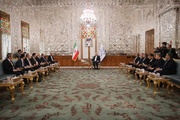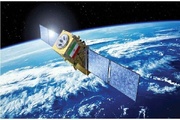Dr. Hamed Asgharzadeh, the project manager, maintained that the project has found a simple and inexpensive solution to resolve a number of the main issues in synthesising graphene, adding that the proposed solution will both reduce time and production costs, as well as provide the possibility to produce graphene in large quantities.
Graphene is one of the thinnest, lightest, strongest and most conductive materials known to humankind, consisting of a single layer of carbon atoms arranged in a honeycomb structure. Its versatility means that it can potentially support a wide variety of applications in electronics, including flexible displays, wearables and other next-generation electronic devices.
“Using paper-making techniques on oxidized graphite and regeneration are the two basic methods for producing graphene, and the biggest hindrance of such methods is the difficulty of washing the graphene oxide due to its high hydrophilic property. This in turn necessitates the use of high-tech facilities such as high-speed centrifuges with hefty costs and limited capacities,” explained Dr. Asgharzadeh.
He added that their project introduces a simple technique in which ultrasound waves are used in specific intervals during oxidation, thus no graphite will remain unoxidized.
“Also, the graphene oxide will regenerate before the washing process and in the presence of oxidizers which will lead to the loss of its high hydrophilic property and facilitate the washing process; in this way, the production time will considerably decrease and the process will have the capacity for mass production,” he said.
The research is the result of collaboration between University of Tabriz and South Korea’s University of Science and Technology.




















Your Comment